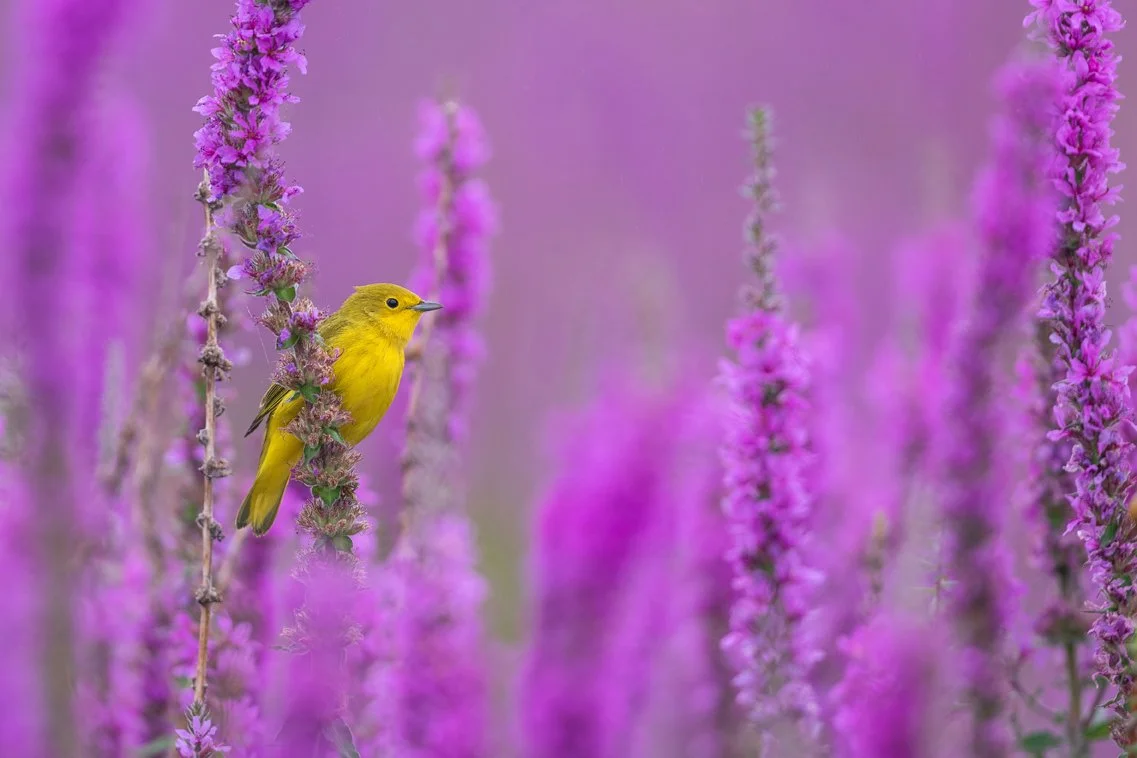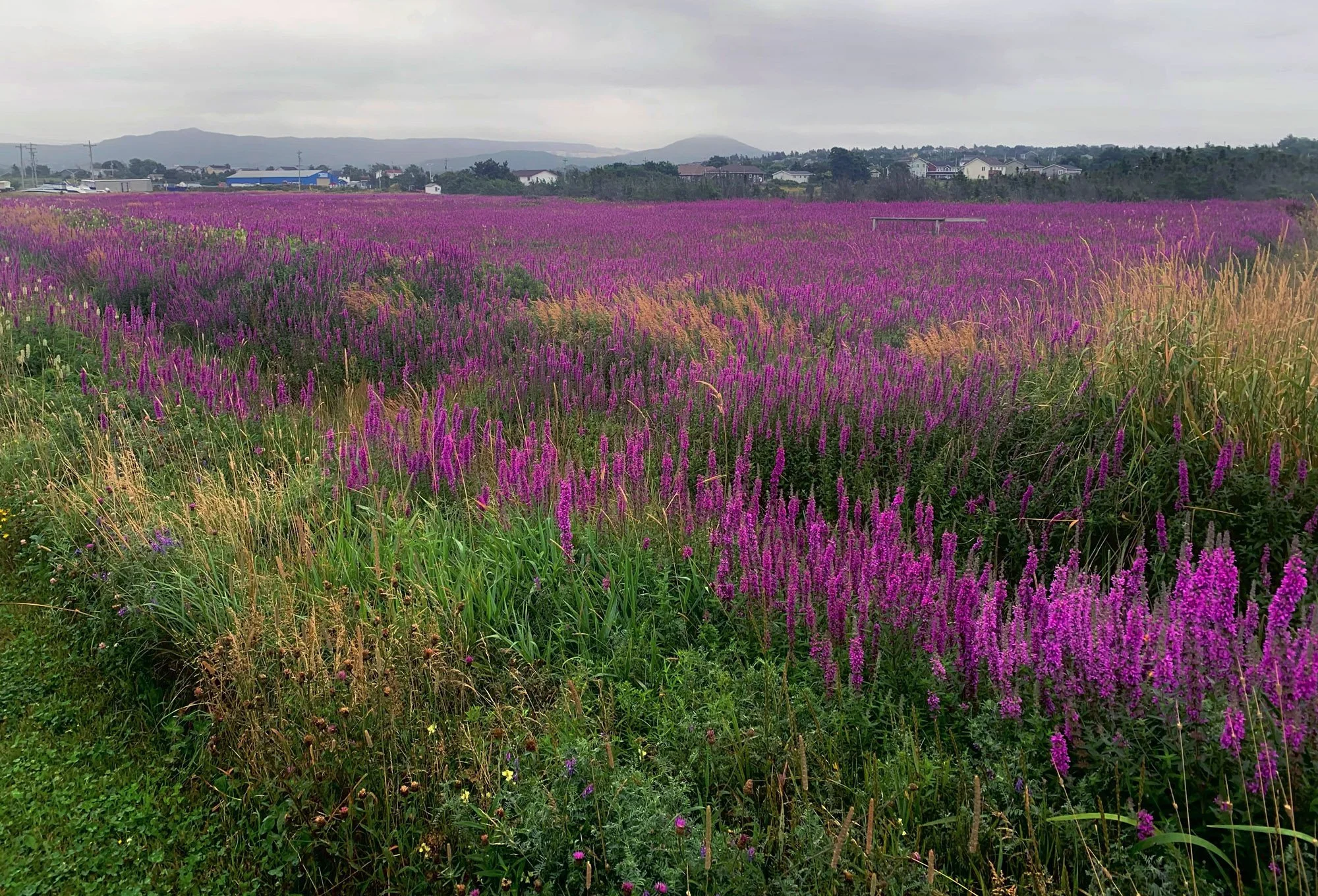Alien Invaders
Aside from the existential threats of Global Warming and wholesale habitat destruction, there are environmental consequences when species grow and live in the wrong places. Plants and animals, introduced by man through accident or design, are among the biggest threats faced by global conservation. In many situations, these alien invaders have a devastating impact on the natural order.
Well-known animal threats include flesh-eating House Mice and Brown Rats capable of wiping out breeding seabirds on remote oceanic islands. And on New Zealand the menagerie of alien predators that accompanied European settlers – including Hedgehogs, Possums, Stoats and cats – have had a catastrophic impact on native wildlife leading to a depressing tally of extinctions.
Above: Pennyroyal (left) and New Zealand Pigmyweed (right). Photos ©Paul Sterry/Nature Photographers Ltd
However, not all threats are immediately obvious, and that is especially true when it comes to plants. Seemingly innocuous introductions can soon turn into botanical nightmares. In the UK, rampaging New Zealand Pigmyweed Crassula helmsii - introduced from the Antipodes - has become a major menace to native wetland flora.
Environmental grief works both ways, however. An ostensibly delicate member of the mint family called Pennyroyal Mentha pulegium somehow made its way with settlers from Europe to the southern hemisphere. Regarded in the UK as a treasured native rarity, it is now a major problem species in New Zealand.
Above: Yellow Warbler Setophaga petechia and Purple Loosestrife Lythrum salicaria taken at Conception Bay South, Newfoundland & Labrador, Canada. Photo © Brad James
One of the most vivid examples of the impact of a plant growing in the wrong place is provided by photographer Brad James. His image of a Yellow Warbler set against the backdrop of a plant called Purple Loosestrife adorns the cover of the latest Bird Photographer of the Year book, collection 7. At first glance, the inclination is to marvel at the bold contrast between the imperial purple of the flowers and the intensely yellow bird. However, look beyond the immediate visual impact and there is a serious and worrying side to the picture – a backstory of conservation alarm.
Above: Purple Loosestrife Lythrum salicaria is native to Eurasia and does best growing with its feet in water – around the margins of streams and ponds, and in freshwater marshes. In the UK, it is seen as a welcome element of native wetland flora. Elsewhere that is not the case and thanks to the actions of man it has spread to places where it is distinctly unwelcome. Photo ©Paul Sterry/Nature Photographers Ltd
Purple Loosestrife was probably initially introduced to North America by accident with ship ballast and was first noticed in the early nineteenth century along U.S. eastern seaboard states. Subsequently, it has spread under its own steam and with assistance and intent. Its spread continues to this day and it is present and naturalised in almost every continental state; it is listed as a noxious weed in 29 states in the U.S. and two in Canada.
Above: Rampant Purple Loosestrife at Conception Bay South, Newfoundland & Labrador, Canada. Photo © Brad James
Purple Loosestrife looks pretty, so what’s the problem, you might ask? Without the natural checks and balances of creatures that eat it and diseases that inhibit it, the plant’s growth is so vigorous that it out-competes and swamps native North American species. This leads to native biodiversity loss.
It was Brad James’ goal to first grab people’s attention through the image’s stunning colours and composition, then focus their attention on the conservation backstory. In that regard, his ambition has certainly succeeded.
Above: Yellow Warbler and Purple Loosestrife at Conception Bay South, Newfoundland & Labrador, Canada. Photo © Brad James
Brad commented: ‘I had passed by this floral sea of purple – at Conception Bay South, Newfoundland & Labrador, Canada - for years and noticed its gradual, creeping spread. Aware that there are conservation issues associated with the plant I wanted to capture an image that contrasted its undoubted botanical appeal with something equally striking but native to North America. In that regard, what could be a better subject than a Yellow Warbler? This year I was aware that a pair had staked a territorial claim to the area; I had photographed them earlier in the summer and hoped they might linger into August when the flowers appeared. Luck was on my side and I was able to catch up with this stunning individual foraging among the flowers. The contrast between native Yellow Warbler and alien Purple-loosestrife could not be more striking, and it tells a compelling story when you realise, in conservation terms, what should be in the image, and what shouldn’t.’
Brad continued: ‘Photography for me is about more than just documenting a particular species or an encounter that I might have experienced. My aim has always been to photograph my subjects in a unique, beautiful and artistic manner. In the hope that once I share my images with others and/or post them on social media they will grab my audience's attention for long enough to spark an interest, or start a conversation about the species or its habitat. I believe this is where conservation begins. The more we can make our audience aware of conservation issues and the things we can do to reverse the decline then the greater the rewards will be for wildlife. This is why Bird Photographer of the Year is so valuable: it provides significant funding for the conservation charity work of Birds on the Brink and with such a large audience it creates a wonderful opportunity and platform to spread important conservation messages worldwide.’





